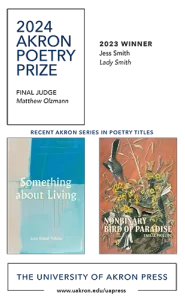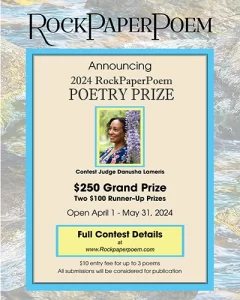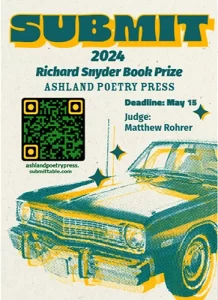Hiram Poetry Review – Spring 2011
Issue 72
Spring 2011
Annual
John Palen
Here are 18 poems by 18 poets, all written at a level of craft that makes them pleasurable to read. Only one is strictly “formal,” a grave and successful rhymed villanelle by John Blair entitled “I Am the Trees Before the Sun.” Two other poems share a similar commitment to make use of repeated lines. Nancy Dougherty’s loosely rhyming “Video or Car,” an ironic poem about two teens killed in a car wreck, picks up the second and fourth lines of each four-line strophe to become the first and third lines of the next. Stephanie Mendel adopts the same pattern of repetition in an unrhymed longer poem about a premature infant, “1965.” In this poem, the repeated lines give a sense of the speaker attempting to gain control of painful thoughts by revisiting them and placing them in new contexts.
Here are 18 poems by 18 poets, all written at a level of craft that makes them pleasurable to read. Only one is strictly “formal,” a grave and successful rhymed villanelle by John Blair entitled “I Am the Trees Before the Sun.” Two other poems share a similar commitment to make use of repeated lines. Nancy Dougherty’s loosely rhyming “Video or Car,” an ironic poem about two teens killed in a car wreck, picks up the second and fourth lines of each four-line strophe to become the first and third lines of the next. Stephanie Mendel adopts the same pattern of repetition in an unrhymed longer poem about a premature infant, “1965.” In this poem, the repeated lines give a sense of the speaker attempting to gain control of painful thoughts by revisiting them and placing them in new contexts.
Two poems paint portraits. In “Groundling,” Elaine Holoboff introduces us to cab drivers who come into their own after midnight. In “Bedroom,” Juned Subhan tells us about women oppressed by their marriages who go looking for their former names: “We thought we might find them like wings, / the names we no longer uttered, // names which were no more than the width of our hips.”
Several of the poems visit extreme situations of loss. In a prose poem, J.T. Ledbetter recounts the violent response of a man to the death of a woman who provided him stability by telling him what to wear. The drive and concreteness of “Flying Away” remind me of some of James Dickey’s poems.
War figures prominently in two other poems. In “War Story #63 Burning Ammo Dump,” Paul David Adkins cuts through the media muddle to the human in just 18 tight lines: “A man / with a hand on his head / turned to hush his hens / fluttering in the rising, falling / half light of the flames.” Perhaps my favorite in the entire issue is Phyllis St. George’s “They Feed They Death,” which ends:
From my stripes and all my stars,
From no Western sins forgiven, they feed,
From my SUV passing another SUV in the night,
They Death, from my embassies inherit,
From the Vietnam Memorial Wall, they Death,
From they bomb and they bloody remains
And all left burning on the oil-stained earth
They feed they Death and it comes.
Lighter but also well written work comes from Heather Hartley, Christine Butterworth-McDermott, Darren Demaree, Amorak Huey, Jon Palzer, Julie Wittes Schlack, Jeffrey Talmadge, Valerie Wieland, Mark Wisniewski, and Diana Woodcock. New books of poems by Woodcock, Millicent Borges Accardi, Laura McCullough, and Dr. Neal Hall are reviewed to round out this issue of the Hiram Poetry Review.
[www.hirampoetryreview.wordpress.com]




